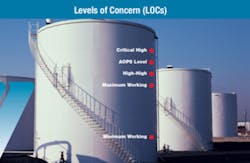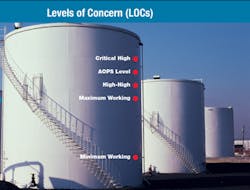With increased focus on improved safety measures in the petroleum refining industry, the American Petroleum Institute has addressed tank overfill prevention with its recently published API 2350 4th edition update.
It is a requirement of the recommended practices and the responsibility of the terminal owner/operator to develop a written risk assessment procedure. The procedure should incorporate a process for determining the probability of overfill release, evaluating the consequences of an overfill occurrence and identifying the means of reducing risk. The API RP 2350 guidelines do not specify how risk assessments should be conducted, due to the specific nature of site risk and stakeholder values. It recommends that, where possible, owner/operators and transporters conduct risk assessments jointly.
Tank Risk Assessment Profiles
Magnetrol has developed risk assessment profile worksheets to demonstrate various factors that may be evaluated or measured for overfill risk and consequences. The factors you choose to evaluate should be based on risk and consequence scenarios that apply to your operation and should also take into consideration regulatory requirements, societal risk tolerance criteria (outlined by corporate or regulatory governance) and cost/benefit analysis.
The "Overfill Probability and Overfill Consequences" risk assessment profiles can be downloaded by following the link below. Additionally, consideration should be given to identifying your operation’s acceptable levels of risk and measures for remediation. Risk may be reduced by:
1. Changing operating characteristics
2. Changing procedures or practices
3. Changing equipment systems and/or alarms
4. Further automation of systems through Transporter initiatives
5. Installation of an AOPS (automated overfill prevention system)
To download Magnetrol's API RP 2350 Readiness Kit, click here.



